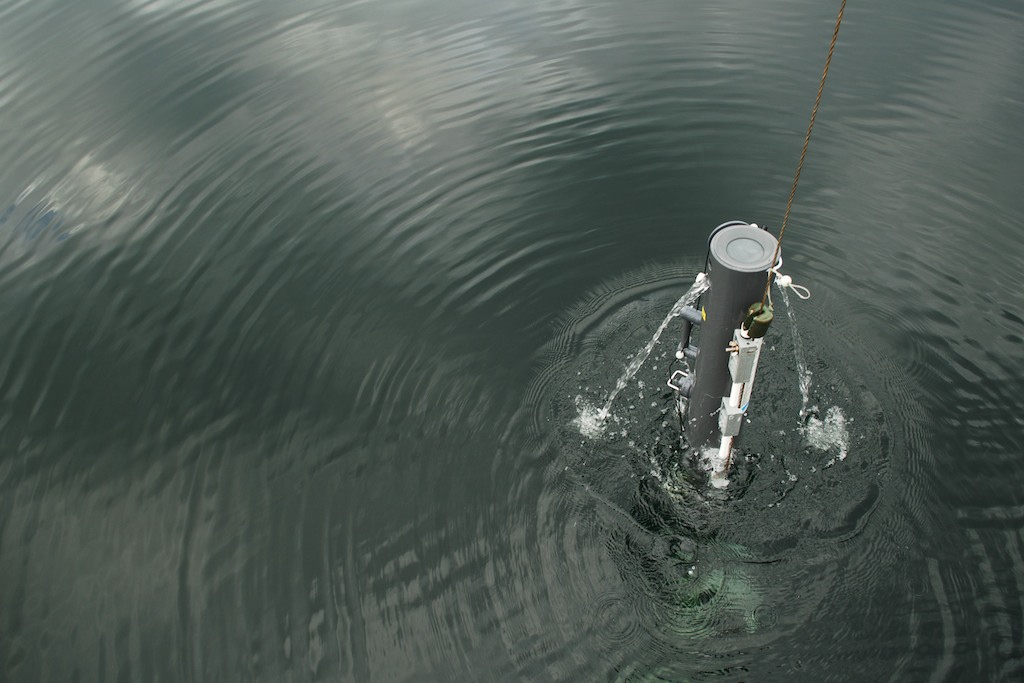New model could point way to microbiome forecasting in the ocean
September 22, 2016

September 22, 2016

A new mathematical model developed at the University of British Columbia integrates environmental and molecular sequence information to better explain how microbial networks drive nutrient and energy cycling in marine ecosystems.
The work could dramatically improve researchers’ and policy makers’ ability to predict how the world’s marine microbial communities (microbiome) respond to climate change, and resulting impacts on fisheries, biodiversity, climate and more.
The model and associated simulations were published this week in the Proceedings of the National Academy of Sciences.
“A drop of seawater can contain millions of single-celled microbes that collectively form the basis for nutrient and energy cycles in the ocean,” says UBC microbial ecologist Steven Hallam.
“Understanding how microbial processes contribute to these cycles is vital in a time of climate change. Our model provides a step change in more accurate projections of microbial processes with potential feedback on climate change and ecosystem health.”
Earth systems models already play an integral role in predicting climate and climate forcing processes in the environment. However, traditional models don’t incorporate microbiome information.
The UBC researchers collaborated across departments and with others in the United States and Germany to develop a predictive model describing multi-omic (DNA, RNA, and protein) dynamics and process rates along gradients of nutrients and energy in Saanich Inlet British Columbia.
Saanich Inlet is a tractable model ecosystem ideally suited to studying microbial community responses to climate change, particularly the impact of oxygen minimum zones. Oxygen minimum zones are hotspots for nutrient loss and greenhouse gas production and they are expanding due to climate change.
“The intersection between microbial processes and nutrient and energy cycles is vividly on display in oxygen-starved regions of the ocean,” says UBC geomicrobiologist Sean Crowe.
“Because micoorganisms are the primary engines driving nutrient and energy conversion processes in the environment we've focused on them in our Saanich Inlet time series, looking for ways to connect multi-omic information to the physical and chemical background of the water column on variable time scales.”
“By focusing on specific genes and pathways rather than individual microbial groups we determined that genes displayed biochemical activity, growth and dispersal dynamics that resembled entire self-replicating organisms, which interacted by feeding on each other's metabolic waste-products,” says UBC mathematician Stilianos Louca.
“This revealed a particularly important metabolic interaction driving conversion of toxic sulfide and the transformation of nitrite and ammonia into nitrogen gas that when combined can strongly influence nutrient availability in the ocean.”
The work was funded by the Natural Sciences and Engineering Research Council of Canada (NSERC), US Department of Energy (DOE) Joint Genome Institute (JGI), and the Environmental Molecular Sciences Laboratory (EMSL); with additional support from the Tula Foundation, the Y. the G. Unger Vetlesen and Ambrose Monell Foundations and the Canadian Institute for Advanced Research.
Additional Quotes
“For many years scientists have studied model organisms including yeast, nematodes and flies to reshape our understanding of fundamental genetic and cellular processes. We have taken that same model systems thinking and applied it to Saanich Inlet to better understand ocean ecosystem processes,” says Hallam. “Because Saanich undergoes seasonal oxygen starvation we have focused on the phenomenon of oxygen minimum zone formation.”
“Our model provides a predictive framework in which to evaluate microbial community responses to oxygen starvation that is extensible to other ecosystems. This makes the work foundational,” says Crowe
“Geochemical modeling traditionally has been relying on a suite of adjustable parameters to describe the rates of reactions in the environment. Whereas we knew that these reactions are catalyzed by microbes, the link to their physiology and the wealth of available genetic information was missing,” says physicist Sergei Katsev from the University of Minnesota. “This model offers a timely and fundamental basis for connecting, in a quantitative way, the chemical concentrations to the activity rates of key biological agents.”
“The convergence of high-throughput data generation, computation and simulation emerging from Saanich Inlet provides an extensible framework for examining the dynamic interplay between microbiomes, ecosystems and formulating human responses to climate change,” says Crowe
“As energy becomes scarce, such as in oxygen starved environments, microbes rely on the other members of the microbial community to complete their metabolic needs, creating a distributed metabolic network where all members work in close association and coordination. Thus, the energy available to an environment dictates the microbial metabolic activity and its effects on the climate,” says UBC microbial ecologist Alyse Hawley.
“One of the most interesting things about microorganisms is their tendency to form distributed networks that combine to complete metabolic processes in the environment. Our model captures these networks at the level of genes, transcripts, proteins and process rates and actually identifies gaps in our current understanding related to the production of nitrous oxide, a climate active gas, in the Saanich Inlet water column,” says Hallam.
“It takes a network to study networks,” says Hallam.
Background
Modern molecular sequencing is beginning to provide great insight into microbial community structure and function at ecosystem scales. However, the quantitative integration of multi-omic information (DNA, mRNA, and protein) and geochemical processes has so far been elusive. We have develop a mathematical model that integrates geochemistry and multi-omic sequence information to explain key metabolic processes in the oxygen-starved waters of Saanich Inlet, a model ecosystem for studying microbial community responses to oxygen minimum zone expansion. Our model largely explains DNA, mRNA, and protein distributions and sheds light on the metabolic networks coupling carbon, sulfur, and nitrogen transformations along a redox gradient. Our approach is extensible to other biogeochemical models incorporating feedbacks of global change on ecosystem functions.
We honour xwməθkwəy̓ əm (Musqueam) on whose ancestral, unceded territory UBC Vancouver is situated. UBC Science is committed to building meaningful relationships with Indigenous peoples so we can advance Reconciliation and ensure traditional ways of knowing enrich our teaching and research.
Learn more: Musqueam First Nation